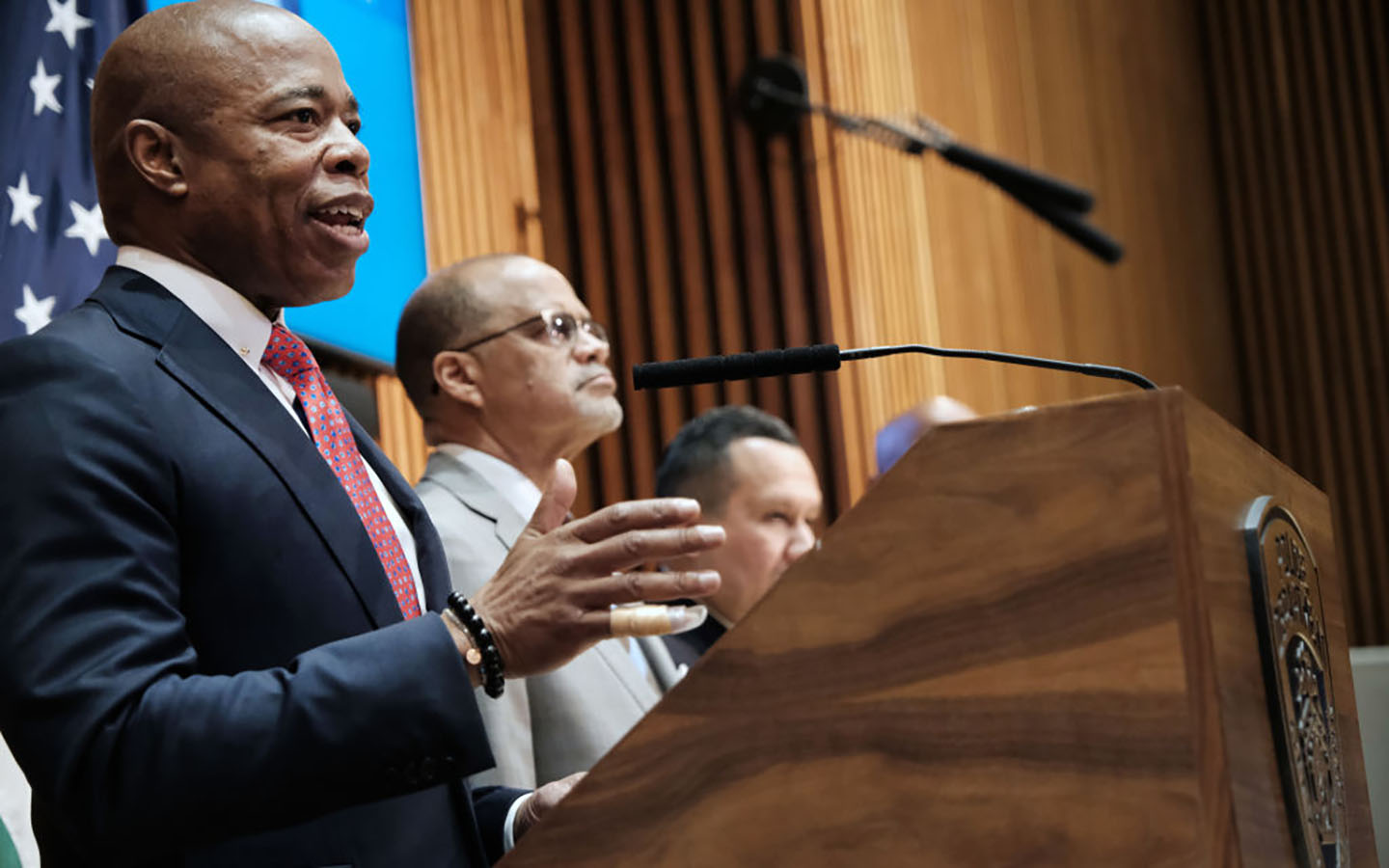Adams to Control NYC Schools for Two More Years — More Than Some Parents Wanted
Some parents say changes to school oversight committee meant to boost their voice are not enough, debate over capping class size

New York City Mayor Eric Adams will retain control over the nation’s largest school system for another two years, after a vote by state legislators late Thursday afternoon. It’s less than what he and Gov. Kathy Hochul pushed for — but more than some parents wanted.
The decision comes with a contentious cap on the number of students in the classroom — topping out at 25 at the high school level — with the final goal to be reached by 2027.
The agreement also increases the size of the panel that votes on education policy, partly an effort to curb the mayor’s power while including more parent voices. But many say the changes are not enough, that the current system cannot account for the needs of such a wildly diverse group of students.
Tajh Sutton, twice elected to the Community Education Council in District 14, which covers large swaths of Brooklyn, said she would love to abandon mayoral control in favor of a system that would allow communities to develop programs that suit their specific needs.
“The mayor is not deeply invested in the majority of our kids,” she said, adding the current system makes it difficult for residents to get his attention. “We need more student, parent and staff voices. We have some really good ideas about how to improve public education as a whole and we really want to see citywide systematic change.”
Paullette Healy, of Bay Ridge, said Adams is too focused on improving the gifted and talented program, neglecting others that impact a far greater number of students, including her son, who has autism. The mayor’s four parent appointees to the expanded Panel for Education Policy must include at least one, like Healy, whose child attends a District 75 school, which serve students with the most significant disabilities. Parents of children with any kind of disability and those in bilingual or English as a second language programs must also be newly represented.
“There are a barrage of special ed concerns,” said Healy, who sits on the Citywide Council on Special Education. “Gifted and talented is not mandated. Special ed is.”
And while the cap is popular with teachers and the union for making classrooms more manageable and for requiring a sizable staffing increase, skepticism remains about its funding — and whether the shift will bring about major educational gains.
Adams initially denounced the idea, saying before the vote that, “unless there is guaranteed funding attached to those mandates we will see cuts elsewhere in the system that would harm our most vulnerable students in our highest need communities — including the loss of counselor positions, social workers, art programs, school trips, after-school tutoring, dyslexia screenings, and paraprofessionals.”
New York City Schools Chancellor David C. Banks agreed, worried class size will become too high a priority in a district facing other pressing challenges, including a 40 percent absenteeism rate.
“Make no mistake, it will lead to large cuts in these critical programs,” he said. “This should not be a choice that school leaders have to make.”
But the mayor softened his stance Friday.
“We are optimistic that there is a way forward on key elements, including ensuring we achieve the shared goal of smaller class sizes without forcing the city into a fiscal crisis and impacting programs for our most vulnerable students,” he said in a statement.
State Sen. John C. Liu, chairman of the Senate’s New York City Education Committee, said the cap will, in fact, be funded by $1.6 billion in additional money NYC schools will receive as part of long-awaited action on a fair funding lawsuit. Liu called the move, “a huge victory for NYC school kids that will finally fulfill the long-overdue constitutional duty of providing students with a sound, basic education.”
Adams may have made peace with the legislature’s plans, but Mona Davids, president of the New York City Parents Union, has not. She chided lawmakers for putting too many constraints — and demands — on the mayor, undermining his authority and making him responsible for a costly directive.
“The only people who benefit from this bill are the United Federation of Teachers,” she told the New York Post.
Farah Despeignes, president of the Community Education Council in the Bronx’s District 8, warned the class size reduction alone won’t translate to improved results.
“If you have a mediocre teacher, they won’t be any more innovative with a smaller class,” said the former educator. “But if you have a well-trained teacher, you get more out of it: This teacher is already doing good work and will have more time with the students. I don’t want people to think outcomes will automatically be great with a smaller size class. That’s not the only issue.”
In addition to the specific parent representatives, the mostly appointed Panel for Education Policy, or PEP, will grow from 15 to 23 members. Also, the mayor and borough presidents will no longer be permitted to remove those members who don’t support their initiatives as has happened in the past. And PEP members will serve one-year terms and can be renewed.
While some embraced the change as a check on Adams’s power, Jonathan Greenberg, president of the Community Education Council in District 30 in Queens, said many parents would like to see a new model, a break from mayoral control — and from the 32 community school boards that preceded it.
“There is an urgent need for a task force to study and recommend a new alternative,” he said. “I would like to see a more democratic system where those responsible for the system are chosen for that purpose.”
The state has been granting mayoral control over the city’s schools since 2002 when it first went to Mayor Michael Bloomberg. This year’s decision was delayed as lawmakers considered additional parental involvement, a core feature of the previous, more decentralized but scandal-plagued model.
Sutton, of Brooklyn, remembers clearly the school board misconduct that rocked her community when she was a student. Even so, she believes mayoral control is far too centralized.
Each of the three mayors given this privilege, she argued, have used children as political pawns to further their own ambition. She faulted Bloomberg for pushing for privatization with public and charter schools occupying the same buildings and said while Bill de Blasio campaigned on student equity, he couldn’t close the opportunity or achievement gap. Adams may be only months into his first term but Sutton sees the mayor and his chancellor as already showing an affinity for charter schools, which are publicly funded but independently run.
But no matter who is in office, parents remain sidelined, Sutton said, frustrated about the removal of mask mandates, the lack of reliable transportation for special needs children, unaddressed language barriers and a host of other concerns.
“A lot of parents have come to see mayoral control as a huge hoop we have to jump through,” she said, adding that parents must not only advocate at the school level, but at the district and city level, hoping to catch the mayor’s attention on social media. “It shouldn’t be this one politician who is completely inaccessible.”
Despite a steep pandemic-related decrease in the student body, there were 1,094,138 children in the NYC school system in 2020-21. Of those, 13.3 percent were English language learners, 20.8 percent were students with disabilities and 73 percent were economically disadvantaged.
More than 40 percent of students were Hispanic, 24.7 percent were Black, 16.5 percent were Asian and 14.8 percent were white: More than 138,000 were in charter schools.
The four-year graduation rate was 81.2 percent in August 2021 with a 4.8 percent dropout rate that year.
The schools are run on a $38 billion budget.
Get stories like these delivered straight to your inbox. Sign up for The 74 Newsletter

;)
